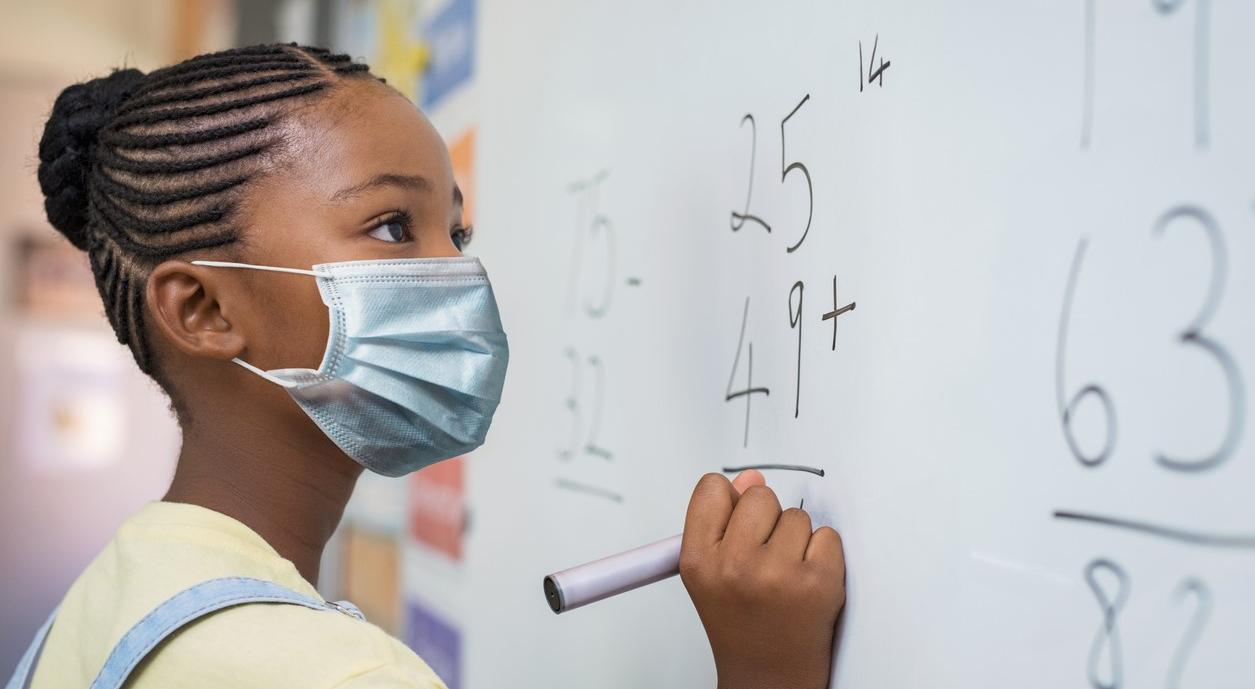Two new studies detail COVID-19 transmission in schools, with one finding a low secondary attack rate during two periods in Massachusetts school districts and another tying nearly half of student and staff infections to school contacts in Italy.
Secondary attack rate of about 3%
A Massachusetts General Hospital–led team evaluated the prevalence of and risk factors for school-related COVID-19 spread in 10 K-12 state school districts during fall 2020/spring 2021 (F20/S21) and fall 2021 (F21). The research was published today in JAMA Health Forum.
"As schools adapt to this new era in the SARS-CoV-2 pandemic during which waves of disease may continue to occur, data-driven best practices are needed to maximize in-person learning while minimizing transmission risk to students, faculty, and staff," the study authors wrote.
In F20/S21, 8 school districts with 70 schools and more than 33,000 students reported 435 index infections (151 staff, 216 students, and 68 unknown) with 1,771 school-based contacts (278 staff, 1,492 students, and 1 unknown). Of all contacts, 74.9% underwent testing, and 2.9% of them tested positive for COVID-19.
Among the 39 positive contacts, 25.6% had clear non-school exposures and were excluded from the base-case secondary attack rate (SAR; rate of spread) calculations, and 74.4% were deemed possible or probable school-associated transmissions, for a SAR of 2.2% (lower bound, 1.6%; upper bound, 26.7%). By district, the SAR ranged from 0% to 11.9%.
In F21, 5 districts with 34 schools and more than 18,000 students reported 309 index cases (37 staff, 207 students, and 65 unknown) with 1,673 school-based contacts (107 staff and 1,566 students).
Of the 1,673 contacts, 95.3% underwent testing, and 2.8% tested positive. Among the 46 positive contacts, 2 had clear non-school exposures and were excluded from the base-case SAR calculations. Forty-four were considered possible or probable school-linked transmissions, resulting in a school-associated SAR of 2.8% (lower bound, 2.6%; upper bound, 7.4%). By district, the SAR ranged from 0% to 8.0%.
Risk factors for spread
A multivariable analysis showed that, in F20/S21, wearing a mask was tied to a lower likelihood of spread than with not wearing a mask (odds radio [OR], 0.12). In F20/S21, the unadjusted SAR was significantly higher if the exposure occurred at lunch, both the index case and contact didn’t wear masks, and the index case had been tested because of an in-school exposure.
In F21, the unadjusted SAR was significantly higher if the contact or index case was an elementary school student, the exposure occurred in the classroom, the contact didn't participate in a test-to-stay program (eg, opted for quarantine), the contact was partially vaccinated or unvaccinated, and the index case was unvaccinated.
In F21, classroom exposure versus non-classroom exposure was linked to higher chances of transmission (OR, 2.47); a fully vaccinated versus unvaccinated contact was tied to a lower likelihood of spread (OR, 0.04). In both periods, a higher Social Vulnerability Index score was associated with higher chances of transmission.
"This study is the first to our knowledge to show that students and staff exposed to SARS-CoV-2 at school were more likely to become infected if they lived in districts with greater social vulnerability, even when vaccination status, distance, and other factors of transmission risk were considered," the researchers wrote. "Schools with more resources may have had more ability to implement ventilatory improvements, a factor known to reduce transmission in schools."
Students and staff exposed to SARS-CoV-2 at school were more likely to become infected if they lived in districts with greater social vulnerability.
Directing more resources to districts with higher COVID-19 transmission risk, they said, may help address both health and educational disparities.
The study showed that viral transmission is not static and is affected by circulating variants, vaccination uptake and effectiveness, testing protocols, and other factors. "These findings suggest that ongoing surveillance efforts may be essential to ensure that both targeted resources and mitigation practices remain optimal and relevant for disease prevention," they wrote.
In Italy, 30% of cases tied to secondary infection
In the Italian study, published yesterday in Epidemics, a team led by University of Trento researchers reconstructed SARS-CoV-2 transmission chains involved in 284 COVID-19 infections in 87 school outbreaks amid the Alpha variant wave in Italy.
Nearly half of infections among school attendees were related to school contacts, and the average number of secondary cases infected at school was estimated at 0.33. Roughly 30% of students and school staff who tested positive during in-person instruction were tied to at least one school secondary infection.
"Our estimates suggest that identifying positive cases within 5 days after exposure to their infector could reduce by at least 30% onward transmission at school," the researchers wrote.

















